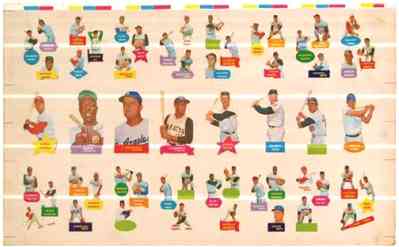1995 UC3 ARTIST's PROOFs - Lot of (12) different w/Hall-of-Famers
Tom Glavine,Ivan Rodriguez... Very, very scarce !!! Just 1 of each Artist Proof every 147 boxes (5,292 packs).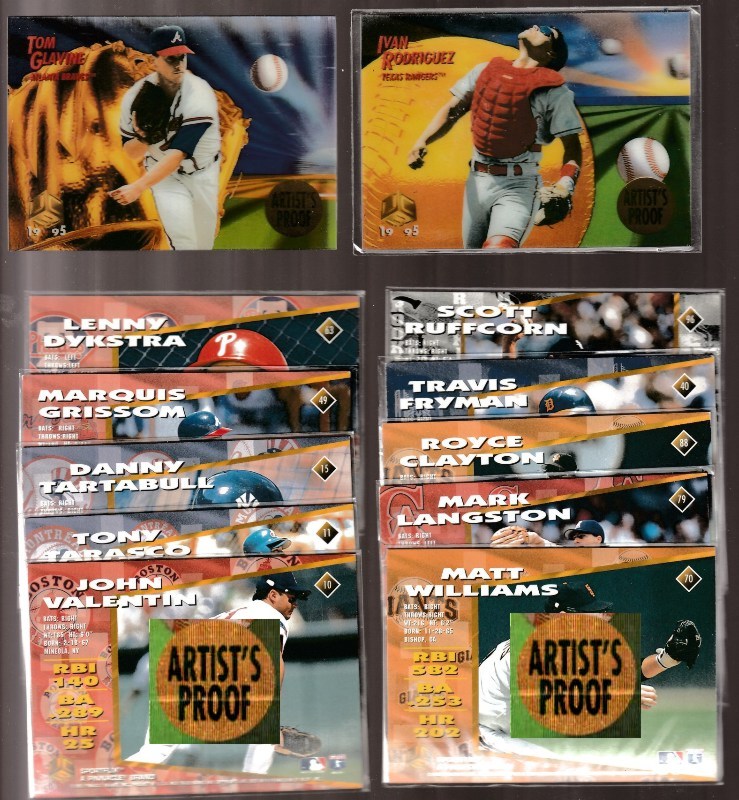

Please wander around the website for more info, prices, values & images
on vintage baseball, football, basketball, hockey, sport and non-sports cards.
1956 Topps Baseball Cards |


1968 Topps Action All-Star Stickers |

Cabinet Card Were oversized trading cards featuring paintings issued mostly 1910-1915.
Card Show is a gathering of dealers & collectors looking to buy/sell/trade sports cards and memorabilia.
Card Stock is the material a card is printed on. Usually paper-based, today companies play with the card stock and sometimes it appears to be wood or leather or see-thru acrylic ...
Cello Pack is a card pack whose wrapper is see-thru plastic. Usually the top & bottom cards are seen. Unopened cello packs showing major stars and rookies sell for heavy premiums.
Centering is the balance of the borders: top/bottom & left/right. On perfectly-centered cards, top/bottom borders match as do the left/right borders. Centering is presented as a set of numbers & directions and often included with the grade. Perfectly-centered is "50/50 t/b" AND "50/50 l/r". As centering gets worse, one number increases and the other decreases. For example: 90/10 t/b is considered extremely off-center top to bottom. The numbers add up to 100 (50/50, 60/40, 90/10 ...).
Certificate Of Authenticity (COA) A document used to verify legitimacy of a collectible. NOTE: Keep in mind that COA's are easier to fake then autographs.
Common A card of a non-star player is considered a "Common" as opposed to cards of a star players or specialty/subset cards such as league leaders, teams cards, World Series cards...
Condition (Grade) Centering, corner wear, photo clarity, edges, creases, print flaws ... all combine to determine a card's condition or grade. Along with rarity/scarcity it is the major factor in a card's value.
Crease Defect usually caused by bending the card. Hard to see, or not, a crease lowers the card's grade (VG or lower) and greatly diminishes it's value.
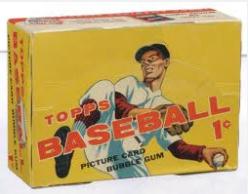
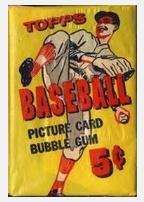 My fondness for 1956 Topps started way back in 1964 when I first started collecting
as an 11 year old. My friends and I wandered nearby neighborhoods in search of "old
cards". Back then, the oldest cards we ever found in dealing with other kids were
1957 Topps.
My fondness for 1956 Topps started way back in 1964 when I first started collecting
as an 11 year old. My friends and I wandered nearby neighborhoods in search of "old
cards". Back then, the oldest cards we ever found in dealing with other kids were
1957 Topps. 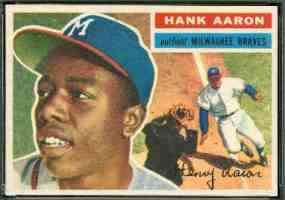
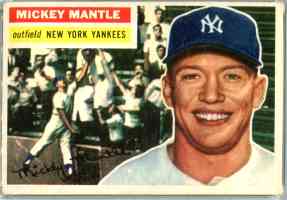
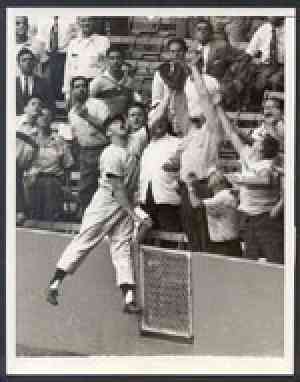
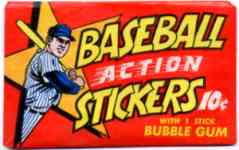 Boxes had 12 packs (10 cents each) with 1 sticker per pack. Sets could be
made back then for $1.60. Today, the Mantle panel goes for around $2,000.
Boxes had 12 packs (10 cents each) with 1 sticker per pack. Sets could be
made back then for $1.60. Today, the Mantle panel goes for around $2,000. 